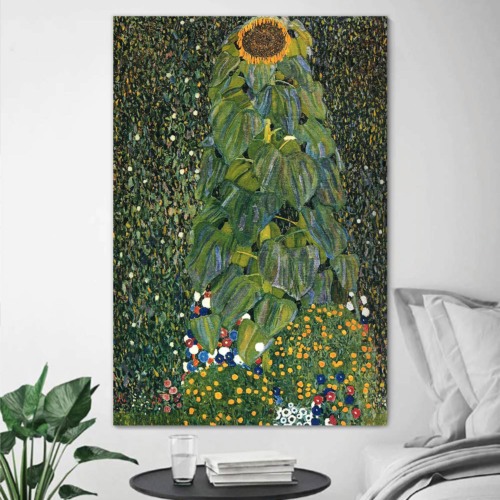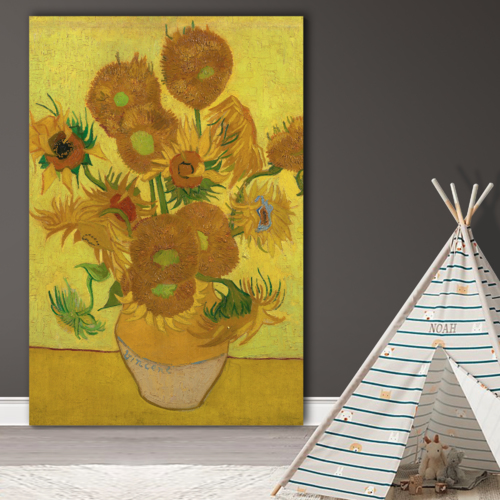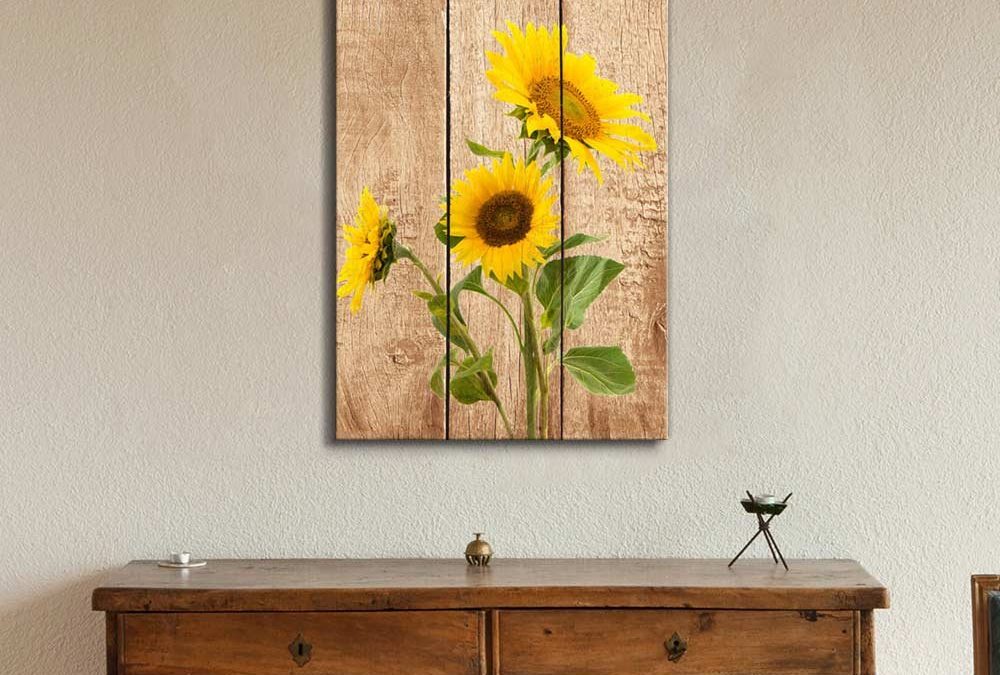There are all kinds of flower varieties on Earth. Perhaps you find yourself most captivated by the delicate red rose? Perhaps you prefer pink carnations? Maybe you’re more of tulip person? If you’re similar to Wall26, then your favorite flower might be the sunflower! The name sunflower hails from two words from the Greek language; “helios” meaning sun, and “anthos” meaning flower. Sunflowers commonly have yellow petals, but also come in red, orange and brown varieties. Read below to discover some very cool sunflower wall art facts!
Details
To understand sunflowers, it’s important to know their physical characteristics! Did you know that the word “sunflower” is a misnomer? In other words, a “sunflower” technically isn’t just a flower. One sunflower is actually composed of thousands of smaller sunflowers! The center of the sunflower, commonly referred to as the blossom or “head”, is a word that refers to the sunflower’s large brown center and its surrounding yellow petals. The brown center of the head is actually composed of thousands of tiny sunflowers. It’s possible for there to be nearly 2,000 sunflowers in this brown center. Read below to discover more sunflower wall art facts.
Seeds

Remember the fuzzy brown center of the sunflower that we were just going over? Within that area of the sunflower lies a middle section call the “ovary”. The ovary contains the seeds of the sunflower, which can be used to plant more sunflower or as a food source. Did you know there are two types of sunflower seeds? One is called “oilseed”, and the other is called “non-oilseed”. Oilseeds are most commonly used as bird food or for industrial purposes to produce sunflower oil. Sunflower oil can be used for cooking or producing skin-care products. Non-oilseeds are most commonly used for human consumption. Read below for more sunflower wall art facts.
Sun
Aside from looking like the physical embodiment of the sun, sunflowers are connected the planet in another way. Sunflowers are called “tournesols” in French; “tourn” meaning turn, “sol” meaning sun. If you haven’t figured it out yet, sunflowers have the ability to physically rotate by tracking the sun! The scientific word for this is called “heliotropism”. When the sun rises, sunflowers will face the east, following the sun throughout the day. At sunset, naturally, sunflowers face the west. As sunflowers grow, it becomes harder for them to move their massive heads, which means that they only slightly rotate the older they are. Read below for more sunflower wall art facts.
Variety

Did you know that there are around 70 different species of sunflowers? Sunflower varieties have different shapes and heights. The smallest sunflowers are called dwarfs; these usually grow in flower clusters instead of growing as one individual plant. The tallest sunflowers, on the other hand, can grow to heights as tall as 30 feet! As far as color is concerned, sunflowers can be yellow, red, orange, brown or purple. Sunflowers can even be bought according to need for pollen! Some varieties produce pollen to encourage garden pollination from insects, while others produce no pollen (these are usually best when giving sunflowers away in bouquets). Read below for more sunflower wall art facts.
Planting

Interested in planting your own sunflowers? If so, why not take some of our planting tips into account! First, find a spot that is constantly exposed to sunlight. Next, make sure that location is a spot where soil has the ability to drain well; for instance, don’t plant a sunflower in a spot where rain can make a puddle. After that, dig your planting spot at least 2 feet deep. Now, fill your hole with nutrient rich fertilizer; sunflowers love to eat and need lots of nutrition due to their size! If you’re planting multiple sunflowers, make sure you plant them at least 6 inches apart; they need their room! We hope you enjoyed these sunflower wall art facts!
Conclusion
Sunflowers are as beautiful as they are interesting! Now that you know more about sunflowers, has your opinion on them changed at all? Do you still like other flower varieties more, or have sunflowers taken your #1 spot? Whatever your favorite flower is, Wall26 hopes you’ve enjoyed reading these sunflower wall art facts!



